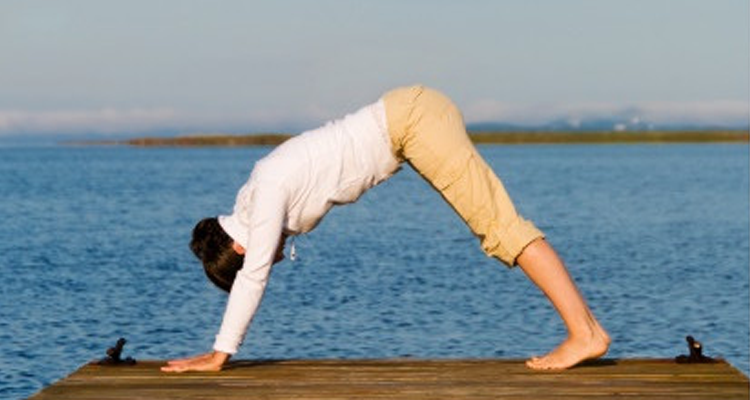Regardless of your distance, running is an endurance sport, and as such, requires basic flexibility.
To maintain the most basic of basic flexibility, runners should practice yoga at least once a week. Many runners stretch prior to or after a workout, but the practice of yoga can exponentially increase your range of motion and bodily resilience.
Your Body on a Run
As a runner, you ask your body to endure unvaried repetitive motion. And whether the goal is to run extremely fast for 400 meters, or to hang on for 26.2 miles, you train constantly through the same motion. Lift leg, flex foot, repeat. Even though this sounds simple, it is not. So very much happens in the body through these motions, and as it is an intuitive motion, many runners never think about what exactly is going on.
The myth is that running comes from the legs. The truth is that healthy running comes from the core. When the core is weak, or the postural form is wrong, all of a runner’s flow comes from the hips and the pelvic girdle. This puts enormous additional stress on the already stressful pounding in the feet, ankles and knees. It also locks down the hip flexors and the iliopsoas groups. Consequently, a runner may experience a painfully tight lower back, hamstrings and knees.
Enter Yoga
Yoga asks the practitioner to move through all possible ranges of motion such as folding forward, bending backward and twisting. All of the forward thrust of your run can literally be unwound. The pounding of your joints in one direction can be soothed by moving them through their opposite range. The tightening of a select few muscle groups can be released by stretching all of the muscle groups. And, as we move through the poses, core strengthening, positioning and relationship will all be addressed. Ideally, a complete practice should be undertaken. But, if you only have time for a quickie, try these quintessential poses and techniques.
Twisted Lunge
From standing, step back with one foot into the high lunge position, making certain that the front knees stands directly above the ankle. Then drop the back knee to the floor and release the toes so that your shoelaces are down. Bring both hands to the front thigh and lift your chest up as your hips sink forward and down. Once this position has been established, bring your palms together and twist so that the opposite elbow is hooked on the outside of the front knee. Stay here and breathe for 5 breaths then reverse.
How it helps: This is one of the most valuable poses for addressing problematic hip girdle issues. This opens up the quads, hip flexors and iliopsoas and also brings awareness to the core positioning. The twisting motion locks the standing knee into position so that you don’t accidentally flare out and miss the stretch.
Downward Dog
From the twisted lunge position put both hands on the floor on either side of your front foot and step back so that both feet are together. Your heels should be hovering from the floor as you shift your hips back and up to the sky. Try to get your chest to reach back towards your upper thighs without moving either your hands or your feet.
How it helps: This pose helps open up the hamstrings and calves and provides a nice counter stretch to your lunges.
Breathe
Long, slow and abdominally, so that you train your diaphragm to move maximally and thereby increase your lung capacity. You should feel your belly moving as you inhale and exhale. These are sure signs that you are doing it right.
How it helps: Long deep breathing promotes relaxation despite exerted effort, and it also increases mental focus.
In addition to the opening and closing stretches, and these basic additional poses, runners should seriously consider finding a yoga class. Any beginner class in any style will be extremely beneficial to you and your long-term love affair with running.
Read on for more insight on the benefits of yoga…
Yoga for Hip and Shoulder Mobility

